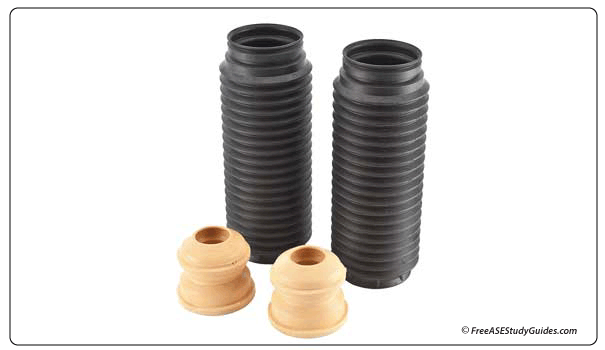ASE G1 Maintenance and Lt. Repair Practice Test
21. A vehicle's engine is slow cranking. The 12-volt battery passes all tests and is in good condition. Which of the following should the technician test next?
- A. The starter motor.
- B. The starter circuit.
- C. The battery state of charge.
- D. The charging system.

22. View the illustration above and choose the correct answer below.
- A. The item in the illustration protects suspension components from metal-to-metal contact.
- B. The items in the illustration fit over strut inserts.
- C. Both A and B are correct.
- D. Neither A or B is correct.
23. A technician cannot balance a tire on a vehicle that vibrates at speeds above 40 mph. Each time the tire is spun, a weight must be added to a different location on the rim. Which of the following is MOST likely causing this condition?
- A. The tire's belt is separated.
- B. There is liquid inside the tire.
- C. The TPMS sensor is shifting.
- D. The tire's tread is cupped.
24. A clunking and popping sound is heard in the front of a vehicle that only occurs while turning. Which of the following is causing this condition?
- A. Loose tie rod ends.
- B. A faulty power steering pump.
- C. Weak coil springs.
- D. Worn brake pads.
25. A FWD vehicle drifts to the left at all speeds. Technician A says a misaligned engine cradle results in this condition. Technician B says loose motor mounts result in this drift. Who is correct?
- A. Technician A
- B. Technician B
- C. Both A and B
- D. Neither A or B
